We're an affiliate
We hope you love the products we recommend! Just so you know, we may collect a share of sales or other compensation from the links on this page. Thank you if you use our links, we really appreciate it!
We installed sound deadening material and noise-absorbing insulation into our van conversion. This was one of the very first tasks and honestly we did it mainly because others had done it, not because we noticed the van was noisy. However, once all these products were installed, we realized we don’t have to raise our voices now while driving, and really how much louder the driving experience was before sound deadening.
Our sound is managed by two products:
- Sound deadening, which dampens the van metal’s vibration
- Rockwool insulation, which is an effective sound absorber
Butyl Sound Deadening
Sound deadening material is made of a butyl rubber material which lowers the frequency of vibrations and thus make them quieter. Vibrating metal from the movement of the van is largest source of noise while driving.
Kilmat Butyl Sound Deadener
Sound Deadening is adhered directly on the van metal by the sticky black butyl substance. Also add in the optional Roller Installation Tool
Very important time, money, and headache saver: only ~33% of the surface of the metal panel needs to be covered by sound deadening material. Tests show that further coverage does not significantly reduce vibrations.
Add in the Sound Deadening Roller installation tool
We used 2 boxes of sound deadening mat (total of 72 square feet) for our 148″ wheel base extended length high roof Ford Transit. We had a tiny bit left over.
Application is simple:
- Clean the surface with degreaser, as a clean surface is needed for the material to adhere.
- The material cuts easily with scissors, but leaves butyl gunk on the scissors so we used our old pair.
- Peel and stick it on! Some people use a roller to roll the material onto the van, but we had no issue just using our hands.
Optional: For extreme sound protection, a layer of Mass Loaded Vinyl (MLV) can be added on top of the sound deadening butyl material sound to block sounds. The main purposes, and downside, of this product is its weight. The heavier it is, the more sound it blocks – yet, the heavier it is, the worse it is for our van’s miles per gallon. We elected forego MLV and have no regrets, as the van is plenty quiet for us. Read more about MLV here.
Rockwool Insulation
Our insulation choice, Rockwool Comfortbatt, does double duty – thermal resistance for temperature as well as sound absorption. Rockwool was very easy to work with – it’s lightweight and cuts with a handsaw. Technically it can make you itchy if it touches skin, so when we started we put on gloves, long sleeves, and a dust mask. After a couple sessions with it we ditched that gear and there was no unreasonable skin irritation.
The insulation is made of stone wool, described as: “a natural material formed from volcanic diabase rock. The rocks are graded and crushed to a suitable size, mixed with coke and slags, then melted in a furnace at a temperature of 1500 °C. The melt is directed onto a series of rotating wheels where it is spun into wool. From the spinning machine the wool enters a chamber where small quantities of resin binder and mineral oil are added to lock the strands together and make them water repellent. ”
Rockwool has a sound transmission class (STC) of 45 in a standard residential. At that rating “loud speech is not audible” across rooms. That’s good enough for us! Per the Rockwool website, “Living close to an airport, the noise you hear inside your house is reduced by 40 percent if your roof is insulated with ROCKWOOL stone wool.”
Rockwool Comfortbatt has an R-Value of 4.3 per inch of thickness. We purchased the 3.5 inch thick product, hence a total R-Value of 15. This insulation is not sold at Home Depot, only Lowe’s.
Rockwool also makes a similar but different product, branded Rockwool Safe N Sound, which is available at Home Depot. Thickness is the difference between the two products, as the Safe N Sound is 3″ thick, but has the same amount of material and is therefore denser. This improves the sound absorption but decreases the amount of airgap and therefore Rockwool has stated Safe N Sound has a lower R-Value of 3.9. We prioritize thermal insulation over sound absorption, so we traveled to Lowe’s and bought Rockwool Comfortbatt.
Thinsulate, another option
Thinsulate is a great and popular insulation product for camper van conversions. It’s easy to install, not itchy, doesn’t off-gas, doesn’t retain moisture, etc. And importantly for this article, it is also an sound absorber.
Why didn’t we go with Thinsulate?
- Rockwool is also easy to install, doesn’t off-gas, and doesn’t retain moisture. It’s itchiness was insignificant in our experience
- Higher R-Value: 4.3/inch for Rockwool vs 3.3/inch for Thinsulate
- Rockwool is thicker: Thinsulate is sold in 1.75″ thickness, that means the installed product has total R-Value of 5.8. Since Rockwool is 3.5″ thickness, Rockwool’s total installed R-Value is 15, almost 3x higher than Thinsulate!
- Rockwool is cheaper! Rockwool cost is $0.80/sq ft and 3.5″ thickness, compared to Thinsulate’s approximately $2.38/sq ft and 1.75″ thickness.
Rest assured , if you go with Thinsulate, it is also a sound absorber! The best (and basically only) available online source for Thinsulate is Impact Products. Their prices on Amazon and eBay are usually the same, but more size options are available on the eBay listing.
Ready for more info?
Visit the Van Conversion Build GuideWe sincerely hope this information is helpful on your build journey!
This post contains affiliate links that may earn us a commission if a product is purchased. But, we always strive for the reuse and repurpose of materials – so we encourage searching for a local used option before buying from our links.

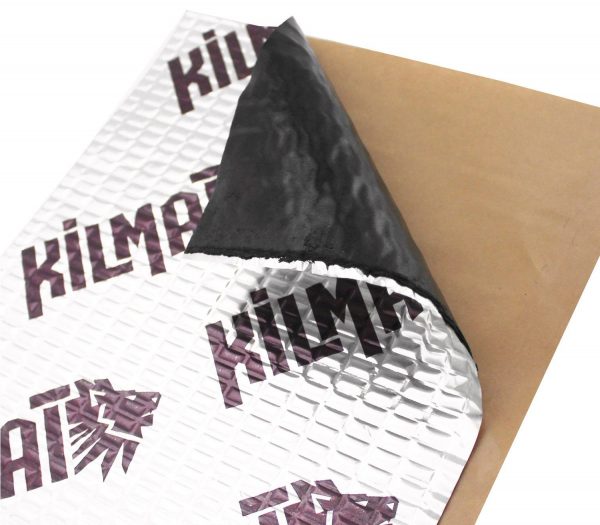
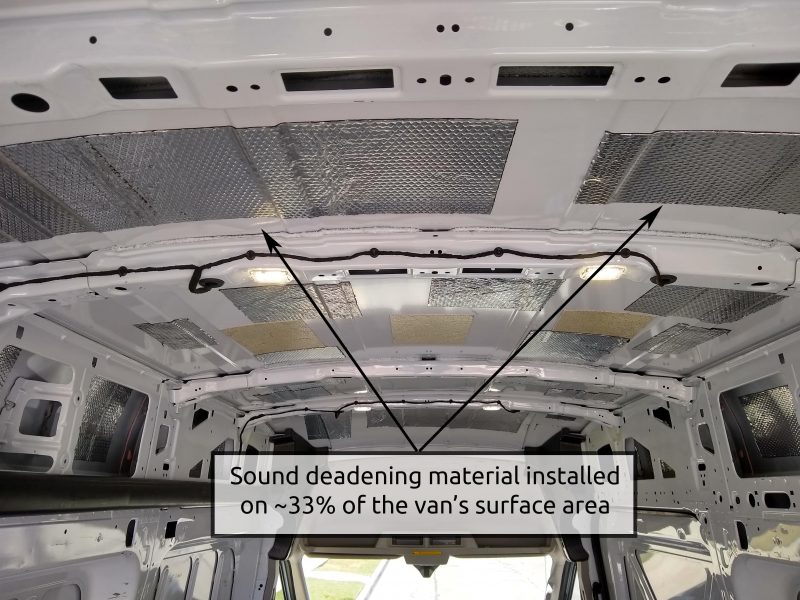
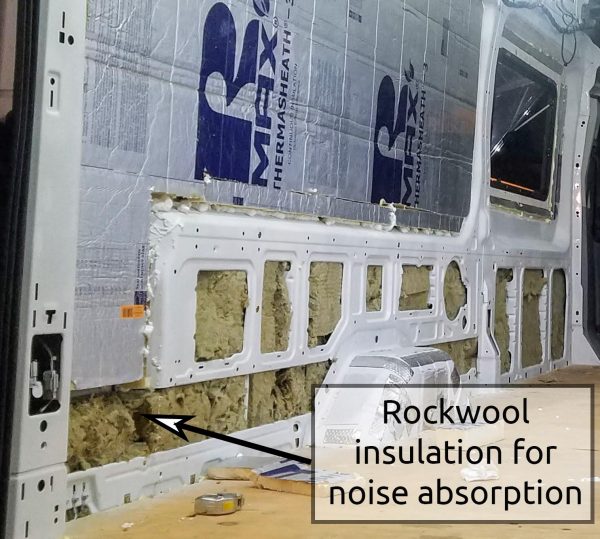
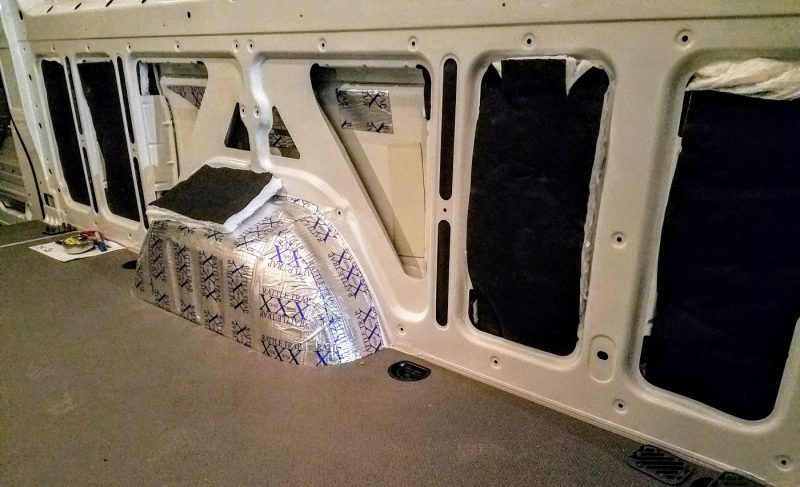
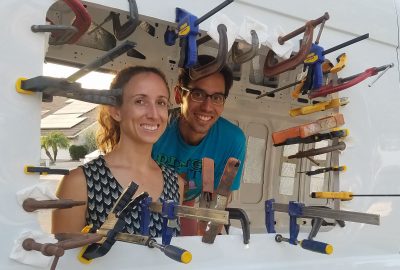
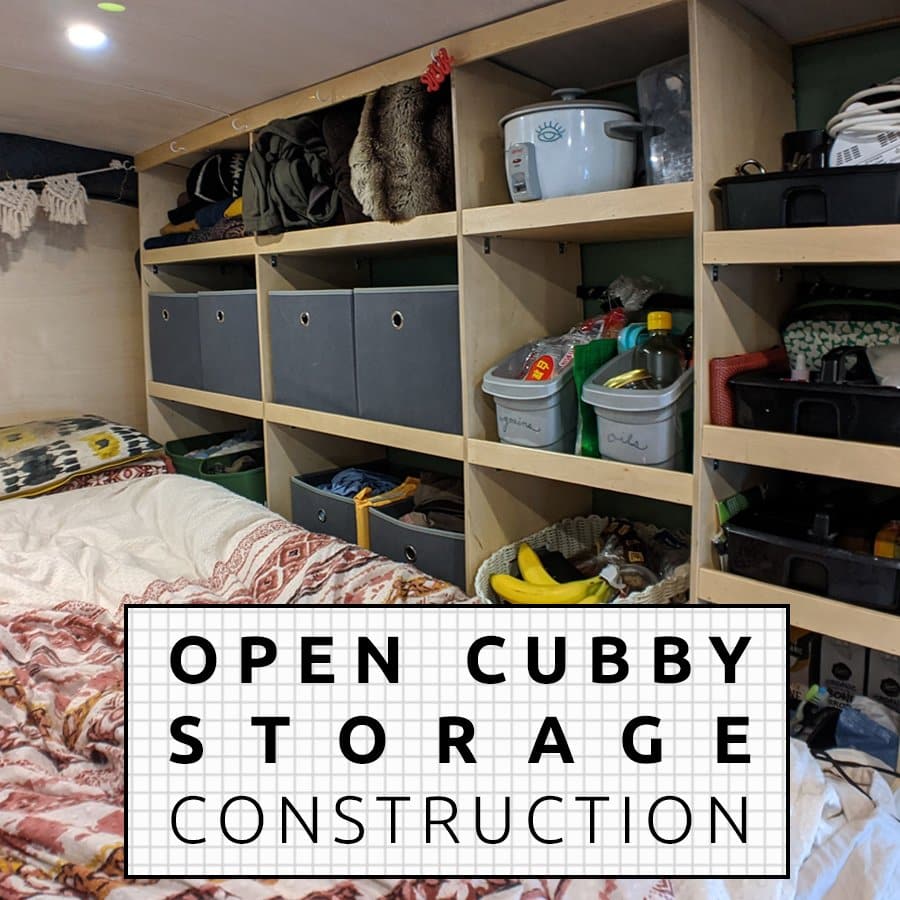
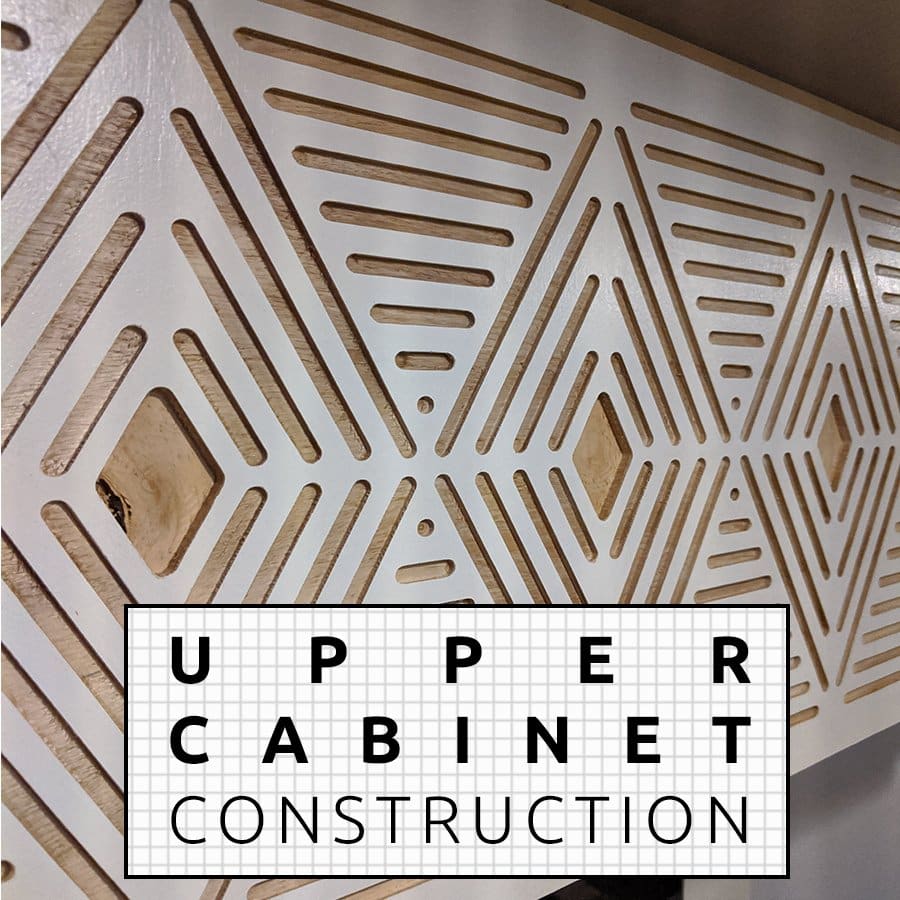
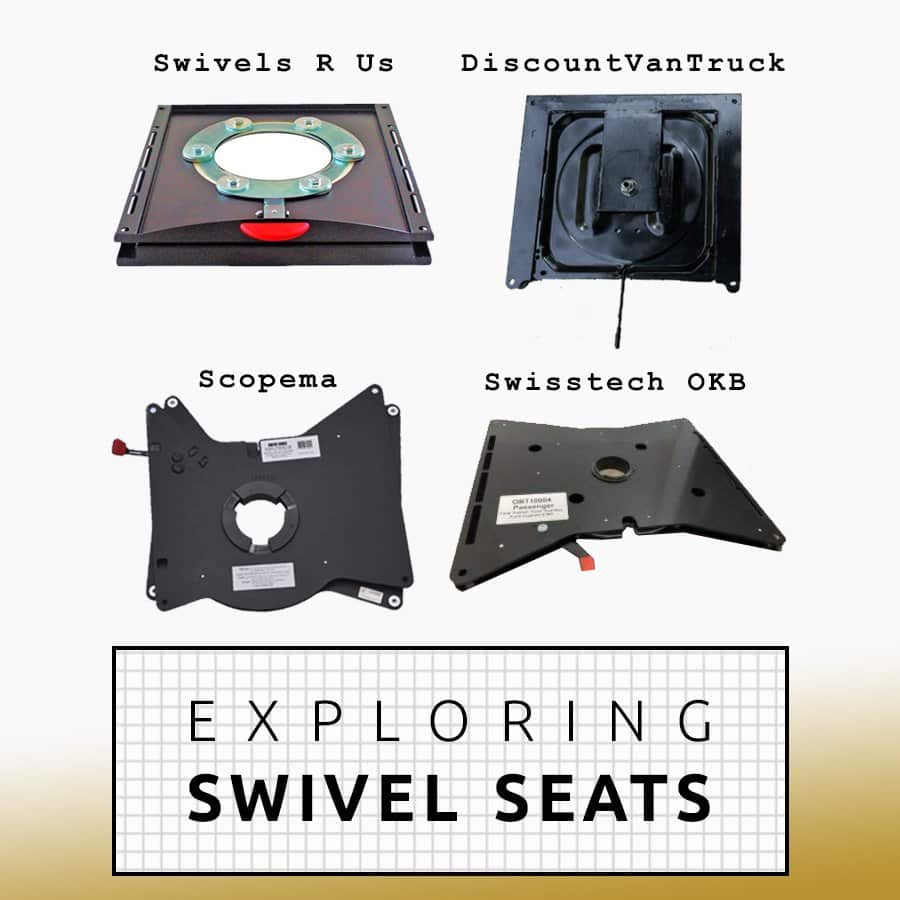
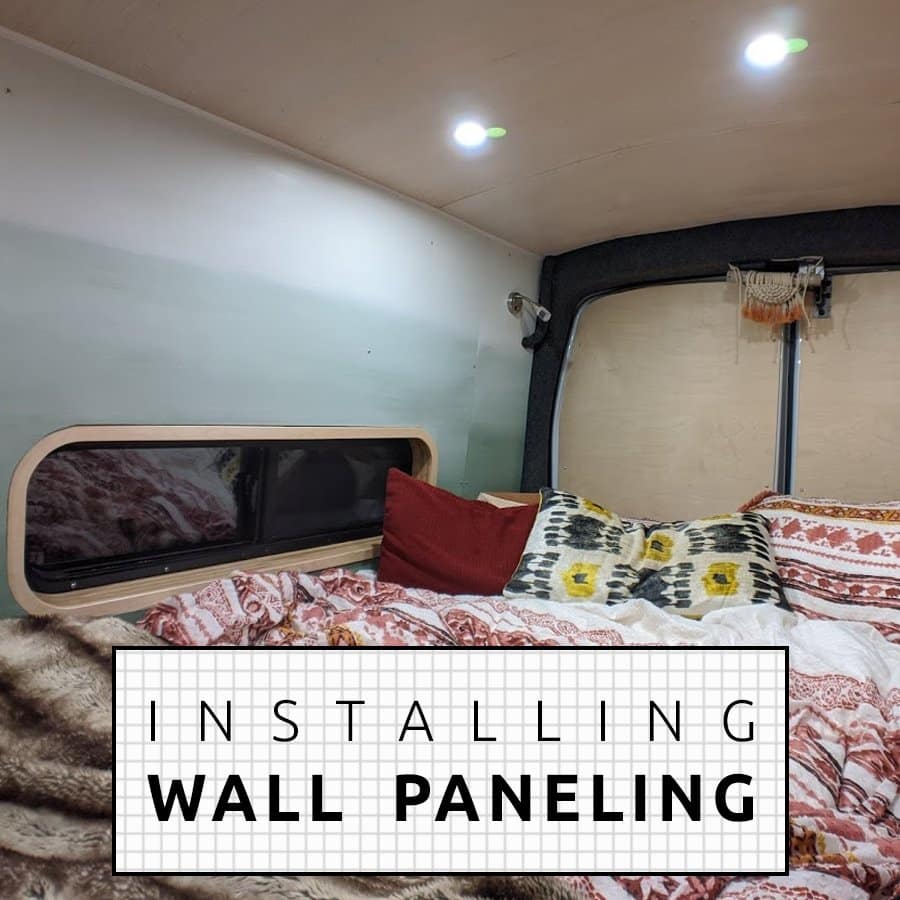
What about condensation? Is Rockwool hydrophobic enough for use in a van conversion?
Yes, Rockwool is hydrophobic. Per the Rockwool website: “The makeup or composition of the material is key when looking for mold-resistant insulation. Stone wool, for example, is made primarily of basalt rock – a natural volcanic rock that is found abundantly in the earth. The rock is melted, along with recycled slag and spun into stone wool insulation. Because it is made of stone, an inorganic material, it does not act as a food source for spores or mold. As such, stone wool insulation will not contribute to the growth of mold, mildew, bacteria or rot. It will instead resist mold”
What is Rockwool’s R value?
Rockwool Comfortbatt has an R-Value of 4.3 per inch of thickness. We purchased the 3.5 inch thick product, hence a total R-Value of 15.
Does van road vibration cause rockwool to deteriorate? As in compressing, or turning powdery?
We have not observed any deterioration of the Rockwool. It’s a pretty sturdy product (not particularly flaky), so it would surprise us if just road vibration caused it to fall apart.
any update on the Rockwool deterioration after having it installed for a while?